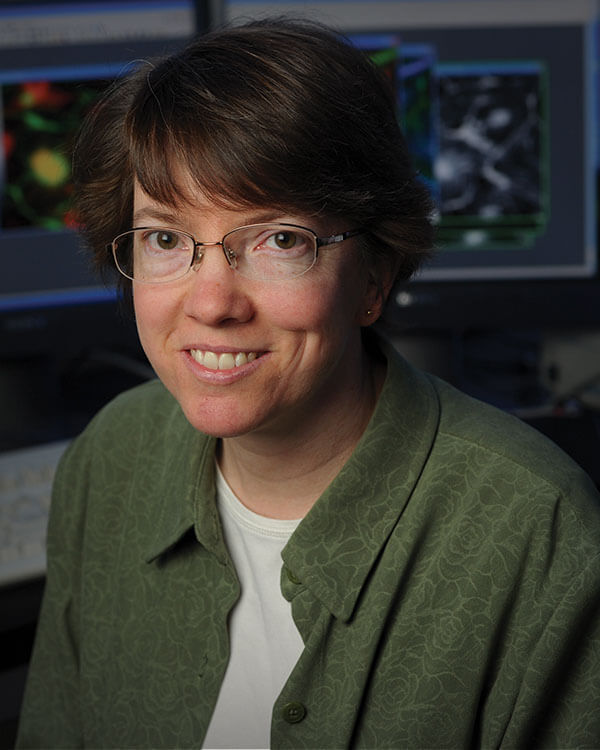Holly Goodson

Professor of Chemistry & Biochemistry; Concurrent Professor of Biological Sciences
Contact
439 Stepan Chemistry Hall
hgoodson@nd.edu
574-631-7744
Research Cluster
Computational Models, Dynamics & Reactions, Imaging & Structure
The Goodson laboratory uses multifaceted approaches including biochemistry, molecular biology, and computational biology to address cell biological questions. We focus on the microtubule cytoskeleton – the dynamic network of protein fibers that pulls the chromosomes apart at mitosis, acts as "railroad tracks" for intracellular transport, and organizes the cytoplasm. Questions that interest us include: how does this network assemble? What governs its dynamic turnover? How do other parts of the cell (organelles, chromosomes, the cell cortex) interact with microtubules? To answer these questions we use a combination of biochemistry, molecular biology, quantitative microscopy, and (in collaboration with applied mathematician Mark Alber) computational models of microtubule dynamics. Topics of particular interest include microtubule plus-end tracking proteins (+TIPs), a network of diverse proteins that dynamically track growing microtubule plus ends, as well as the disease-associated proteins Tau (Alzheimer's) and stathmin (cancer).
A second long-term interest in the Goodson laboratory is molecular evolution. While establishing the history of protein families is an important goal in itself, our primary interest has been in using the history of a protein family to help understand how its members work now. We use nature’s mutagenesis (the set of related sequences present in the genome databases) and combine it with bioinformatics techniques such as homology modeling to perform structure/function analysis. Recently we have taken advantage of unique continuous culture systems developed for a biosensor project to begin a new project studying the process of evolution in vitro and in silico.
Publications
- "Interactions between Tau and Different Conformations of Tubulin: Implications for Tau Function and Mechanism" Duan A.R.; Jonasson E.M.;, Alberico E.O.; Li C.; Scripture J.P.; Miller R.A.; Alber M.S.; Goodson H.V. J. Mol. Biol. 2017, 429(9), 1424-1438.
- "Mechanism for the catastrophe-promoting activity of the microtubule destabilizer Op18/stathmin" Gupta K.K.; Li C.; Duan A.; Alberico E.O.; Kim O.V.; Alber M.S.; Goodson H.V. Proc. Natl. Acad. Sci. U.S.A. 2013, 110(51), 20449-54.
- "The mechanisms of microtubule catastrophe and rescue: implications from analysis of a dimer-scale computational model" Margolin G.; Gregoretti I.V.; Cickovski T.M.; Li C.; Shi W.; Alber M.S.; Goodson H.V. Mol. Biol. Cell. 2012, 23(4), 642-56.
- "Insights into cytoskeletal behavior from computational modeling of dynamic microtubules in a cell-like environment" Gregoretti I.V.; Margolin G.; Alber M.S.; Goodson H.V. J. Cell. Sci. 2006, 119(Pt 22), 4781-8.